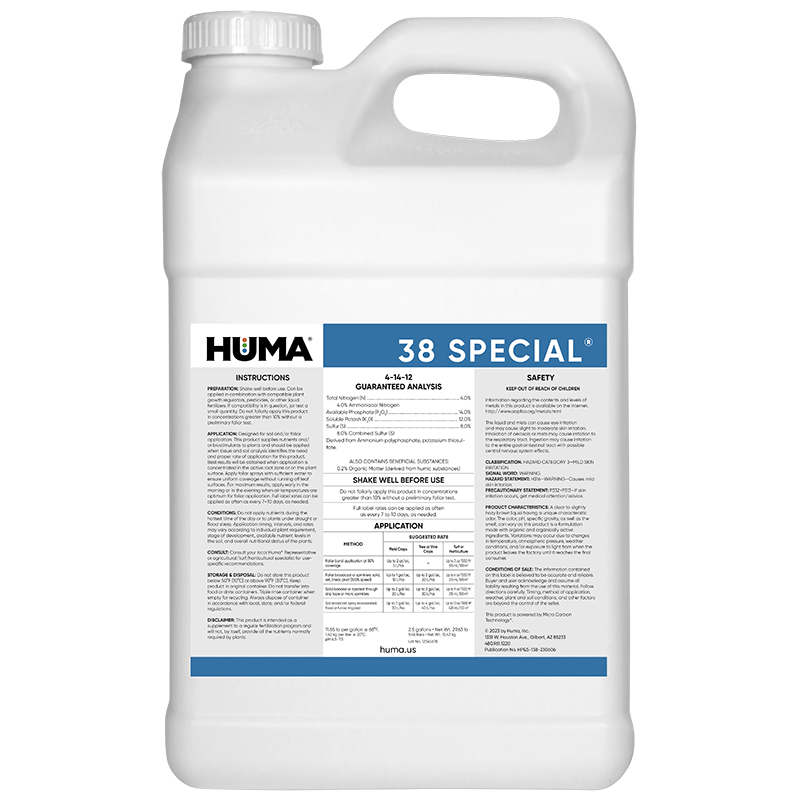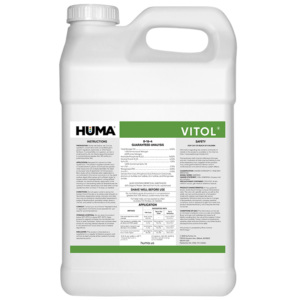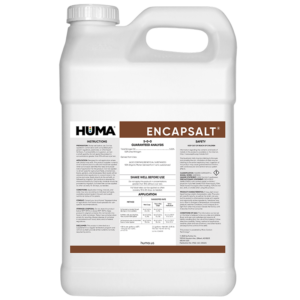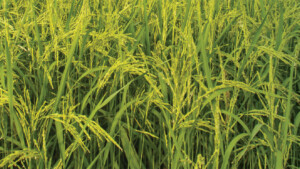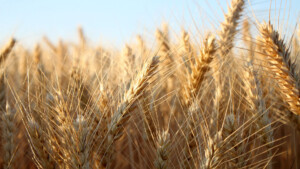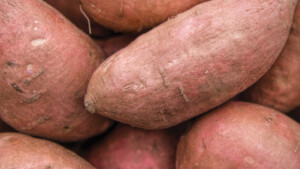38 SPECIAL
Benefits of Use:
- Stimulates root growth in seedlings and transplants
- Improves plant vigor
- Increases phosphorus levels that promote flowering and fruit set
- Organically complexed and salt-buffered to reduce leaf burn and phytotoxicity
- Foliar nutrients are “leaf friendly” to ensure maximum uptake and translocation
Deficiency Symptoms—When to Apply:
- Plant stress caused by nutrient deficiencies, insects, disease, weather, or chemical/mechanical damage
- Leaf burn or phytotoxicity from foliar applications
- Seedling diseases
FAQs
Related Products
Related Case Studies

Huma Pro® Stimulates Rhizophagy Cycle of Microbes to Increase Root Growth
Objective The purpose of this research project was to evaluate how humic acids stimulate microbial activity and initiation of the rhizophagy cycle (in which plants cultivate microbes on their roots and then absorb them to extract their nutrients). Huma® Huma Pro®, a liquid 6% humic acid product, was used as the humic acid biostimulant source.

X-TEND Increases Soybean Yields
Background Huma’s X-TEND® has been applied to dry fertilizer and liquid blends to improve fertilizer effectiveness and to decrease nutrient losses. X-TEND may also be utilized to treat the soil and the plants directly to improve nutrient use efficiency, and act as a biostimulant to improve plant growth, and ultimately look at an increase in
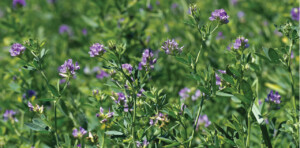
Huma® Improves Alfalfa Quality In the Southwest
Background All Huma® Inc. products are based on extractions of humic substances and other materials that can stimulate plant growth and improve crop quality. Objective The objective of this field trial was to evaluate the efficacy of applying Huma® products, specifically Encapsalt®, Super Phos®, Max Pak®, 44 Mag,® Vitol®, Super Nitro®, Breakout®, Fertil Soil®, Iro-Max®,
Related Blog Posts

This Week in Ag #20
Wheat harvest is well underway throughout the country. Each morning, the harvest process begins with equipment maintenance. Most farmers and custom cutters will park their fleet in a row, or in close proximity, so they can readily perform daily service. This involves the grease gun. Combines have hundreds of moving parts. Some of the most key

Pickin’ Time or Payout Time? The Reality of Fall Harvest
Fall is usually the most exciting season on the farm, but this year rising input costs and declining farmer sentiment are overshadowing the joy of harvest. With corn facing steep losses per acre and overall farm expenses projected to hit record highs, the numbers tell a sobering story for agriculture’s most important season.

Research Report: Huma Gro® X-Tend® B Improves Barley Yield with a ROI of 38:1
In research conducted at the University of Idaho, Huma Gro® X-Tend® B, powered by Micro Carbon Technology® (MCT), has proven to improve barley yield. The boost in production led to a higher net gain per acre with a return on investment (ROI) of 38:1.

